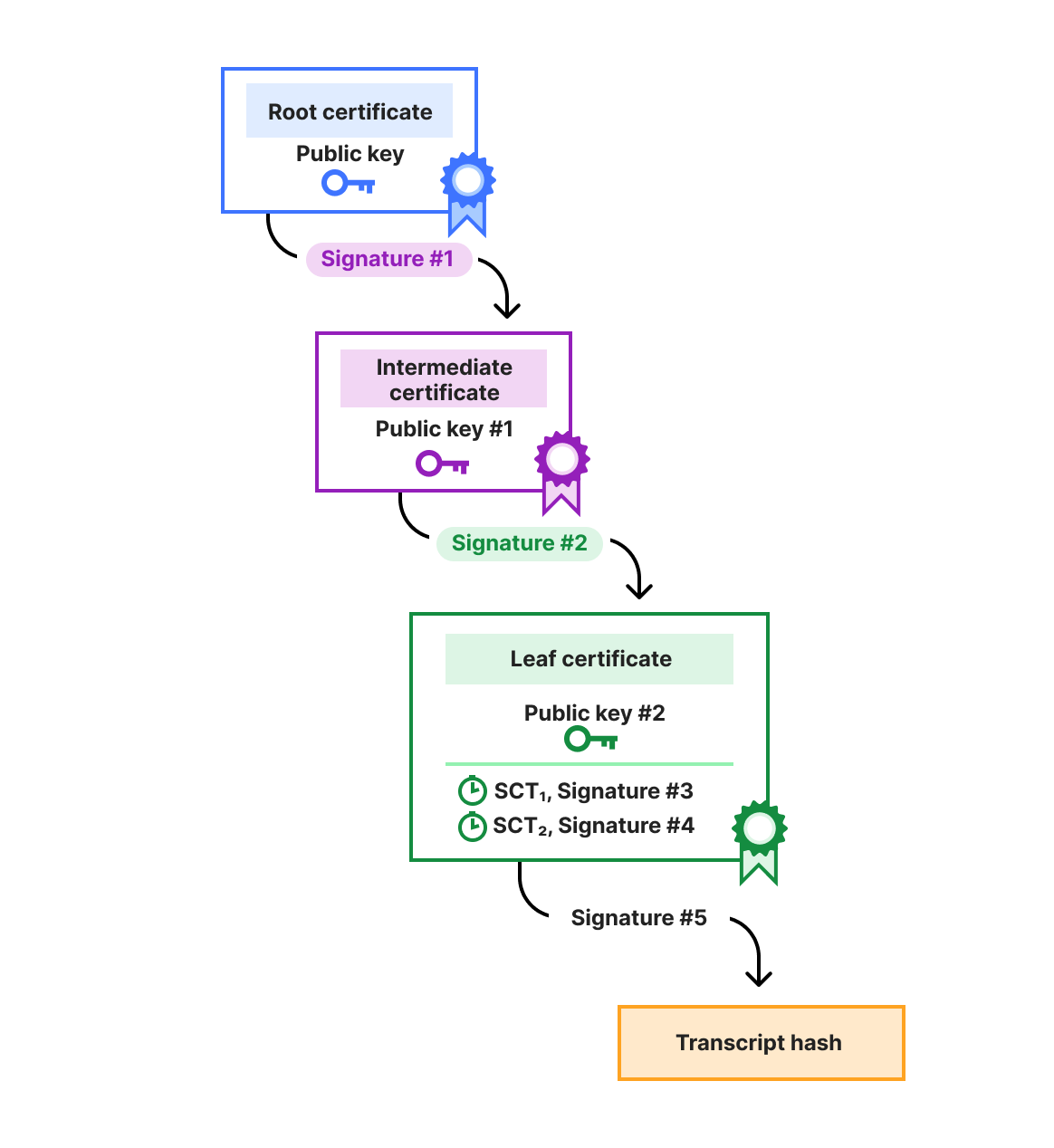Hey there,
I hope you’ve been doing well!
😍 The Joy of (Claude) Coding
The past few weeks of using Claude Code have been some of the most fun I’ve ever had coding.
Claude Code still makes mistakes sometimes or over excitedly writes like 200 lines of Python that could be 20, but overall it’s made me 5x-10x faster at prototyping (disclaimer: I’m a “works on my machine” level programmer by default).
It’s been a delight describing what I want then mostly letting it go while I periodically check in as I prep food, do chores, or in between lifting sets 💪
With the GitHub Action installed, I’ve also iterated on features or design docs via Issues or PRs on my phone while I’m on public transport. Very cool.
I’ve been including a number of resources I’ve found useful in this newsletter, I’ll try to write a post putting everything in one place at some point.
P.S. Learn about speeding up your code reviews with AI live with Scott Behrens and me: How to do Secure Code Review with Vibe Coding IDEs. Hundreds of people have already signed up, hope to see you there 👋
Sponsor
📣 Your Comprehensive Guide to AI & Threat Intelligence
Malicious AI innovation is accelerating. See how adversaries are scaling attacks with AI—and how defenders are fighting back.
In this guide, you’ll learn how to:
-
Track how adversaries are operationalizing AI tools—from jailbroken LLMs to deepfake-as-a-service.
-
Build AI-enhanced workflows that improve signal detection, speed up analysis, and sharpen investigations.
-
Avoid common AI pitfalls: automation overreach, blind trust in models, and losing human context.
👉 Get the Guide 👈
“2.6M+ AI-related posts analyzed across underground sources in just five months.” Whoa 🤯 I’m constantly seeing attacks like this in the news, great to read a round-up.
AppSec
anvilsecure/pqcscan
By Anvil Secure: A small utility, written in Rust, that allows users to scan SSH and TLS servers for their stated support of Post-Quantum Cryptography algorithms.
hazcod/shade
By Niels Hofmans: A system for detecting shadow SaaS and insecure credentials (checks Have I Been Pwned) via a browser extension deployed to your company’s browsers.
Unexpected security footguns in Go’s parsers
Trail of Bits’ Vasco Franco explores unexpected behaviors in Go’s JSON, XML, and YAML parsers that can lead to security vulnerabilities, including: misuse of the “-” tag allowing unintended field (un)marshaling, case-insensitive key matching in JSON, and parser differentials when processing the same input across services. The post provides concrete examples, Semgrep rules for detection, and recommends using DisallowUnknownFields, implementing custom strict parsing, and watching for JSON v2 which addresses many issues.
Sponsor
📣 WorkOS AuthKit + Radar: Authentication with Abuse Prevention
Authentication isn’t just login. It’s building secure flows, managing sessions, handling tokens, supporting SSO, and protecting user data. AuthKit gives you a fully hosted, customizable UI for sign-up, MFA, password resets, and seamless SSO. Production-ready from day one.
But authentication alone doesn’t stop abuse. WorkOS Radar adds real-time threat prevention: blocking bots, stopping brute force attempts, and catching free trial abuse. Built-in defenses activate instantly without custom scripts or logic.
👉 Protect your app today 👈
Authentication and session management are easy to make mistakes implementing, and blocking bots is a pain, nice to not have to deal with that 😅
Cloud Security
fwd:cloudsec North America 2025 YouTube Playlist
The preeminent cloud security conference has just posted 45 talks on cloud security, AI, and more. Enjoy!
inayathulla/cloudrift
By Inayathulla Lavani: An open-source cloud drift detection tool that helps you identify when your cloud infrastructure no longer matches your Infrastructure-as-Code, before it causes a security or compliance incident.
Stealthy Persistence in AWS – A Practical Simulation for Defenders
Sergio Jimenez shares a step-by-step guide to simulate a recently discussed stealthy AWS persistence technique (H/T Eduard Agavriloae and Martin McCloskey) using API Gateway and Lambda for credential exfiltration. The attack leverages Lambda versioning to hide malicious code, with a “benign” $LATEST version and a separate “backdoored” version explicitly invoked. The post offers a number of defense and detection recommendations, including looking for invocations of old or “inactive” versions of Lambdas.
Building a cloud security roadmap: Tools by layer and when you need them (pt.1)
Ethan Chen gives a quick rundown of each cloud layer (control plane, orchestration, platform, and application layers), what kinds of security tools fit where, when you’ll need them, and vendor examples.
Security tool acronyms: cloud-native application protection platform (CNAPP), cloud detection and response (CDR), cloud infrastructure entitlement management (CIEM), data security posture management (DSPM), privileged access management (PAM), and more.
💡 Every time a new security vendor acronym is created, a fairy loses its wings, I take a drink, and someone at Gartner probably gets promoted.
Sponsored Tool
📣 New from SpecterOps: Privilege Zones for BloodHound Enterprise Help Enforce Security Boundaries
Prevent lateral movement and privilege escalation by enforcing custom access zones in cloud, on-premises, or hybrid environments.
Privilege Zones extend BloodHound’s attack path analysis and remediation capabilities beyond the traditional Tier Zero focus, so teams define custom security boundaries and enforce least privilege access across their environment.
👉 Learn More 👈
Ooo I don’t know if I’ve seen something that enforces privilege zones like this before, super cool! 👀
Blue Team
Taking SHELLTER: a commercial evasion framework abused in-the-wild
Elastic Security Labs describes how the commercial AV/EDR evasion framework SHELLTER is being used by threat actors to deploy infostealers. The post provides an in-depth technical analysis of SHELLTER’s evasion capabilities, including polymorphic junk code, API unhooking, payload encryption, advanced VM/sandbox detection, and more. Elastic also released a dynamic unpacker tool for SHELLTER-protected binaries and YARA rules.
Detection Field Manual #2 – What are Detection Rules?
Zack Allen explains how detection rules allow detection engineers to encapsulate their threat knowledge and expertise and scale it by encoding it into search queries against SIEM-indexed logs. SIEMs ingest logs from assets (e.g. laptops, servers), and then detection rules can execute on a fixed schedule (e.g., every 5 or 30 minutes) or in near real-time as logs are ingested.
Rolling Out Santa Without Freezing Productivity: Tips from Securing Figma’s Fleet
Aaron Osborne describes how Figma rolled out Santa, an open-source binary authorization tool (basically: only run <these approved> applications), across their entire fleet of MacOS devices. The post discusses:
-
Using file access authorization (FAA) to restrict access to specific files (e.g. browser cookies), ensuring that only approved applications or processes can interact with them.
-
They initially ran Santa in monitoring mode to build a data-driven ruleset of what employees were currently running, then did a staged rollout.
-
Using SigningID and TeamID rules, which leverage Apple’s developer certificates, to identify trusted applications and publishers (e.g., Zoom, Slack, Chrome, Notion, and GitHub).
-
Compiler rules: To cover locally built binaries, ensuring developers could work uninterrupted.
-
Package rules: They created a custom Package Rule system that dynamically generates Binary (SHA-256) rules for packages from official sources like Homebrew or GitHub.
-
A Slack-based self-service approval process.
Red Team
Yeeb1/SockTail
By Yeeb: A lightweight binary that joins a device to a Tailscale network and exposes a local SOCKS5 proxy. Designed for red team operations and ephemeral access into restricted environments using Tailscale’s embedded client (tsnet). Zero config, no daemon, no persistence
Beacon Object Files – Five Years On…
Raphael Mudge describes the history and design decisions behind Beacon Object Files (BOFs), a technique he created in 2019 to address post-exploitation challenges in Cobalt Strike. He explains how BOFs allow running external capabilities within Beacon without fork&run or memory-injected DLLs, and reflects on BOFs’ strengths (simplicity, small size), limitations (uninitialized globals, single-file format), and suggests potential future improvements like a module browser UI.
Abusing Chrome Remote Desktop on Red Team Operations: A Practical Guide
TrustedSec’s Oddvar Moe describes how to abuse Chrome Remote Desktop for red team operations, detailing the installation process and an undocumented parameter (–pin=111111) to bypass GUI-based PIN setup. The technique requires local admin access to install the MSI installer. Defenders can use AppLocker to prevent unauthorized installations and look for “Chrome Remote Desktop Host” in installed applications.
AI + Security
fraim-dev/fraim
A flexible framework for security teams to build and deploy AI-powered workflows that complement their existing security operations. Fraim has a workflow engine for orchestrating AI agents and tools, supports multiple AI providers, can integrate tools (e.g. existing security tools), input connectors for git repos, file systems, and APIs, and can output JSON, SARIF, and HTML.
It comes with pre-built workflows for analyzing source code for vulnerabilities and analyzing infrastructure as code files for security misconfigurations or compliance violations.
A non-anthropomorphized view of LLMs
Halvar Flake (Thomas Dullien) argues against anthropomorphizing large language models (LLMs).
>Instead of saying “we cannot ensure that no harmful sequences will be generated by our function, partially because we don’t know how to specify and enumerate harmful sequences”, we talk about “behaviors”, “ethical constraints”, and “harmful actions in pursuit of their goals”.
RepoAudit: An Autonomous LLM-Agent for Repository-Level Code Auditing
Paper by Jinyao Guo et al introducing RepoAudit (GitHub repo, landing page), an LLM-based agent designed to perform autonomous repo-level code auditing that has agent memory and explores a codebase on demand by analyzing data-flow facts along feasible program paths, leveraging tree-sitter (through LLMSCAN) to identify and extract functions from source code, along with their metadata such as function name, line numbers, parameters, call sites, and other program constructs (e.g. branches and loops).
RepoAudit has found ~115 confirmed bugs so far, many of which seem to be functional bugs and memory leaks, some security-related: null pointer dereference, use after free, double free, buffer overflow.
💡 I think combining LLMs + traditional program analysis and leaning into what each is good at is very promising 👌
Misc
AI
-
Mastering Claude Code in 30 minutes – by Boris Cherny, its creator
-
Vercel’s v0 AI Tool Weaponized by Cybercriminals to Rapidly Create Fake Login Pages at Scale
-
Make AI not always sound so certain by Signull: add this to your personal preferences so it becomes part of AI responses: “Add a section at the end of your responses labeled “Uncertainty Map,” where you describe what you’re least confident about, what you may be oversimplifying, and what questions or followups would change your opinion.”
Misc
-
The AWS Survival Guide for 2025: A Field Manual for the Brave and the Bankrupt – Another hilarious post by my friend and renowned 💩 poster Corey Quinn
-
Rick Beato discusses how the music industry actually works – songs are written by a handful of songwriting superstars, performed by the artists you know, and all albums and music videos are carefully crafted by teams of people
Politics
-
Russia is allegedly testing a next-gen AI-powered drone that can autonomously identify and attack targets. It can operate in the face of GPS jamming, and uses thermal vision to operate at night and in low visibility.
-
Some threat actor has been using AI to impersonate Marco Rubio and contact foreign and US officials
-
Mobilizing Cyber Power: The Growing Role of Cyber Militias in China’s Network Warfare Force Structure – “PLA military officials and defense academicians have identified cyber militia forces (e.g. Antiy Labs, Qihoo 360) as a vital supporting force for network operations in specific scenarios, such as a future Taiwan invasion contingency or crisis in the South China Sea.”
-
State Secrets for Sale: More Leaks from the Chinese Hack-for-Hire Industry – An analysis of two recent data leaks from Chinese hacking companies posted for sale on DarkForums, including info suggesting offensive hacking services provided to the Chinese government and military units.
✉️ Wrapping Up
Have questions, comments, or feedback? Just reply directly, I’d love to hear from you.
If you find this newsletter useful and know other people who would too, I’d really appreciate if you’d forward it to them 🙏
Thanks for reading!
Cheers,
Clint
@clintgibler


